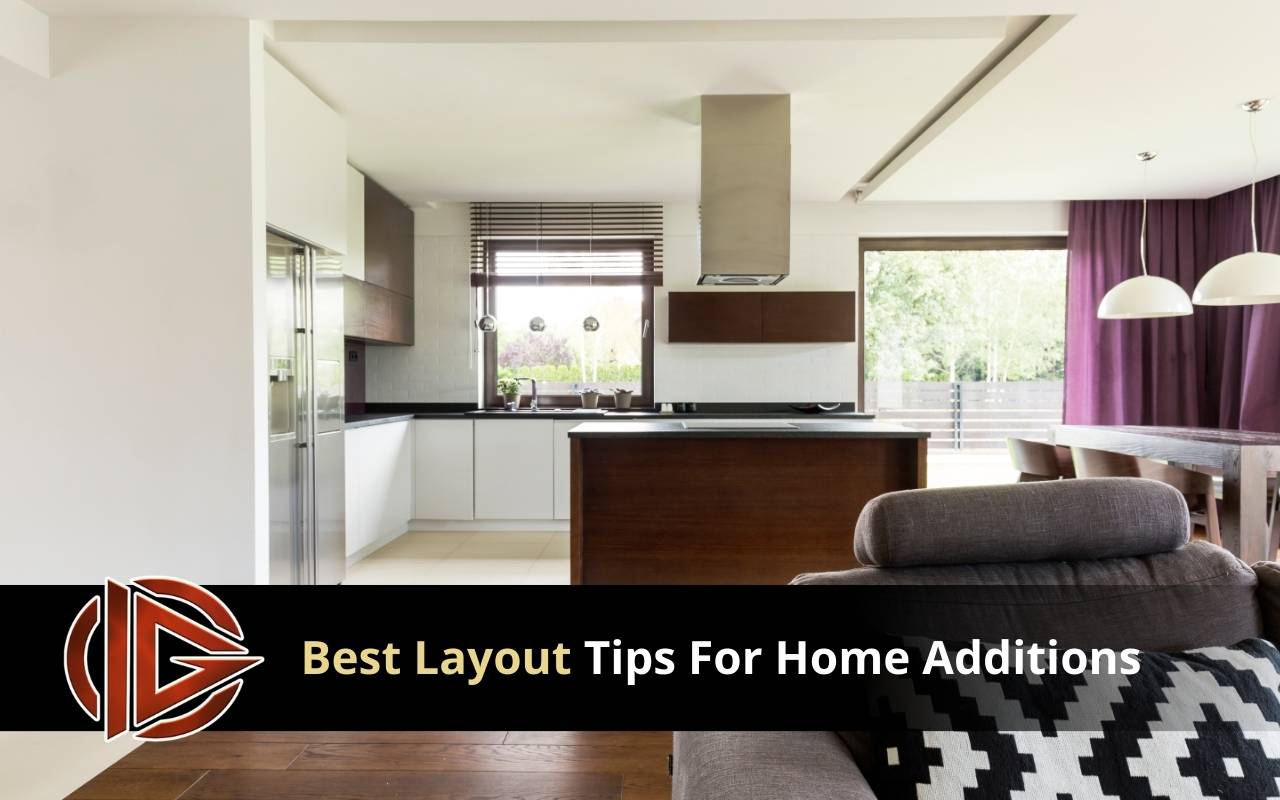
Transforming your home with a new addition is an exciting journey, but it can also be overwhelming when it comes to designing a layout that feels harmonious and functional.
Whether you’re dreaming of an open-concept addition or pondering how to elegantly connect old and new spaces, mastering the art of layout planning is essential. In Walnut Creek, where space and style are equally prized, the challenge often lies in creating seamless transitions that enhance your living experience without compromising on aesthetics.
Imagine walking through your home and feeling an effortless flow from room to room, where every corner tells a story of thoughtful design. This blog post dives into the best layout tips for home additions, offering insights that cater to your need for both beauty and practicality.
From navigating room addition transitions to crafting a split-level layout that complements your unique space, we’ve got the expertise you need to turn your vision into reality. Get ready to transform your home into a masterpiece of design and functionality!
Maximizing Natural Light in Your Home Addition
When it comes to natural light, planning your new space around the sun’s path can make all the difference. Start by identifying the orientation of your home in Walnut Creek—southern and western exposures typically receive the most daylight.
Large windows, floor-to-ceiling glass doors, and well-placed skylights can flood your addition with sunshine, reducing reliance on artificial lighting. To further enhance brightness, consider high-performance, low-E glass to maintain energy efficiency while allowing abundant light in.
Reflective interior finishes such as light-hued walls, glossy tile, or strategically placed mirrors can help bounce light deeper into the room. If your budget allows, clerestory windows are another elegant option for maximizing daylight without sacrificing privacy.
For sloped or split-level layout tips—especially in hilly neighborhoods of Walnut Creek—incorporate high windows above stair landings to brighten transition zones. Thoughtful placement of openings ensures your addition feels spacious, airy, and seamlessly connected to the outdoors all year round.
Seamless Room Addition Transitions
Consistent Flooring Materials: Match floor materials from the existing structure with the new space to create a visual flow that feels intentional and harmonious.
Continuous Heights: Use flush thresholds or gentle ramps to avoid abrupt height changes between existing and new spaces, especially in kitchen expansions or living room additions.
Cohesive Design Elements: Incorporate cohesive trim profiles, paint colors, and hardware styles throughout the new area to reinforce continuity and enhance overall aesthetics.
Creating an Open-Concept Layout
Open-concept additions promote fluid interaction and a spacious feel. Begin by defining primary zones—cooking, dining, and lounging—using furniture groupings, area rugs, and subtle ceiling height changes.
A well-designed add-on kitchen layout can serve as the heart of your open plan: an island or peninsula anchors the space while providing casual seating and prep surfaces. To maintain a sense of coziness, incorporate lighting layers such as pendant fixtures over the island, recessed cans in the living area, and wall sconces in quieter corners.
Partial-height partitions or a built-in bookshelf can delineate spaces without blocking light or sightlines. By balancing openness with subtle separation, you’ll achieve the ideal blend of sociable gathering zones and comfortable personal spaces.
Harmonizing Old and New Spaces
One of the most common questions homeowners ask is how to connect old and new spaces without creating visual discord. Start by selecting a complementary color palette—soft neutrals or mid-tone hues used in your existing home can be echoed in your addition to establish unity.
Introducing one or two accent colors through furniture, fixtures, or cabinetry helps tie the areas together while adding personality. Architectural details such as molding profiles, ceiling beams, or exposed brick can be replicated or thoughtfully reinterpreted in your addition.
For split-level layout tips, maintain similar ceiling heights where possible to avoid jarring transitions. Transitional spaces—like a short hallway or a mudroom—can act as buffers, enabling a gradual shift in style. Thoughtfully blending materials and architectural cues creates a cohesive home where old and new coexist in harmony.
Utilizing Multifunctional Furniture for Space Optimization
Built-In Banquette: Provides seating, storage underneath, and defines a dining area without bulky chairs.
Convertible Furniture: Fold-down desks, Murphy beds, and convertible coffee tables allow seamless function switching, especially in guest rooms doubling as home offices.
Modular Shelving and Rolling Islands: Easily reconfigurable pieces provide flexibility in layout and organization, optimizing space utilization.
Incorporating Smart Storage Solutions
Smart storage is essential to keep your home addition uncluttered and efficient. Built-in cabinetry around windows can create cozy reading nooks with hidden drawers below.
In an add-on kitchen layout, extend cabinetry to the ceiling to maximize vertical storage. Pull-out pantry shelves, deep drawers with organizers, and corner carousels make daily tasks easier.
Under-stair spaces can become closet systems, wine storage, or a pet-friendly retreat. Wall-mounted organizers in mudrooms or entryways corral shoes, coats, and bags.
For open-concept additions, discreet storage walls or furniture with integrated cubbies preserve a clean aesthetic. Intelligent storage solutions let you maintain a serene environment. Explore more planning home additions tips for efficient layouts.
FAQs
How can I maximize space in a home addition?
Use open-concept layouts, multifunctional furniture, and smart storage solutions to optimize every square foot of your addition.
What is the best way to blend old and new spaces?
Maintain cohesive color palettes, replicate key architectural details, and use transitional spaces to create smooth visual continuity.
Should I hire a professional for my home addition layout?
Working with an architect or designer ensures functional, aesthetically pleasing layouts and compliance with local building codes. Check out how to maximize space with home additions for ideas.
What role does natural light play in layout planning?
Strategic window placement, skylights, and reflective finishes enhance daylight, making your addition feel spacious and connected to the outdoors.
Bringing Your Vision to Life
Realizing your dream addition begins with clear communication and collaboration. Engage an architect or designer familiar with Walnut Creek’s building codes and aesthetic character.
Create mood boards, gather inspirational photos, and outline your must-haves. Once plans are finalized, work with a reputable contractor who understands seamless floor plans and room addition transitions.
Establish a realistic timeline and budget, allowing for contingencies such as permit approvals or material lead times. Regular site visits will ensure design intentions are honored. For professional guidance and tailored solutions, contact us today here.




